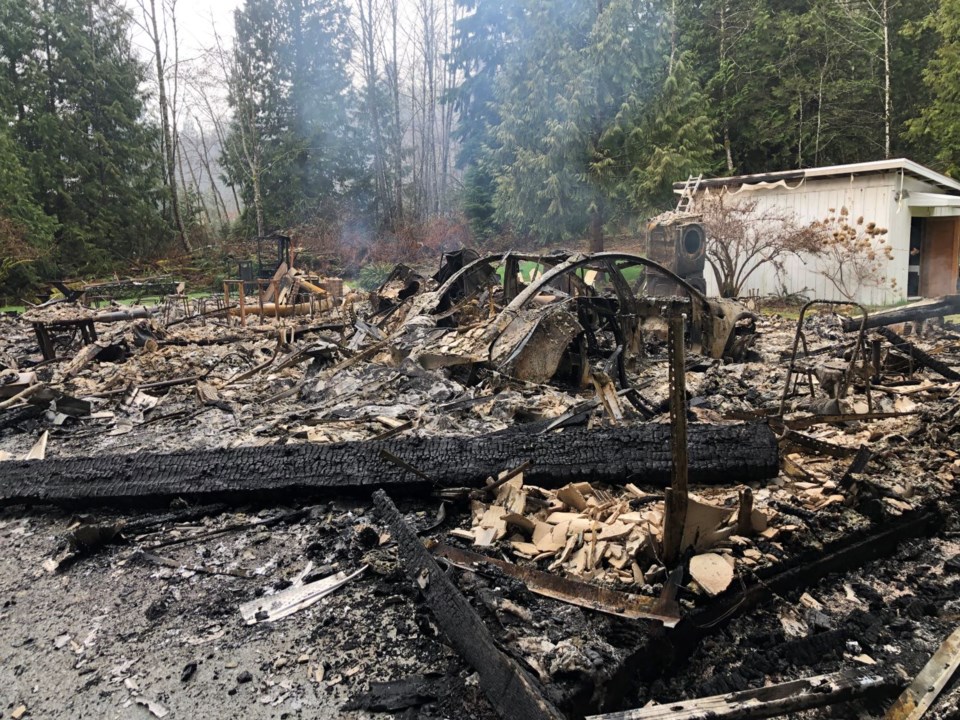The operations manager for Talbot Insurance Services in Gibsons, says potential homeowners are obviously very interested in what property taxes are going to cost them but, depending where they live, they should be more concerned about the cost of fire insurance.
Darren Anderson says anyone buying a home in an area outside of fire protection services, should be asking about the cost of insurance because the rates tend to be “significantly higher,” than in protected zones.
“When you're talking about the homeowner's standpoint, that's something that catches a lot of people off guard,” said Anderson. “Because I think realtors do a great job in their professions, however, I don't think that's a topic that comes up quite as often as it should in the buying process.”
According to the national Fire Underwriters Survey, in some areas, properties within eight kilometres of a fire station and 300 metres of a hydrant are considered hydrant-protected and may qualify for better insurance rates. According to the survey, public fire protection classifications are graded on a scale from one to 10, with Class 1 representing the highest level of public fire protection, while Class 10 reflects the absence of any effective public fire protection.
In March a house that burned to the ground on Port Mellon Highway, was located near the eight-kilometre boundary of the West Howe Sound Fire Protection District. Because the structure was located outside of the fire protection zone, the Gibsons and District Volunteer Fire Department had to get permission from the provincial Emergency Coordination Centre to attend. Once it was determined there was no risk to life, firefighters on the scene were forced to stand down and leave.
“You know, people might be purchasing a home and insurance is definitely a thought they get, but whether a home is considered fire-protected or unprotected is something that doesn't always get brought up,” said Anderson. “And it can catch a lot of new home buyers off-guard if they purchased a home in an unprotected area and go to get it insured and realize that the cost of insuring it is quite a bit more than they anticipated.”
Anderson said it’s hard to give specific numbers because every home or property is different but fire insurance in unprotected areas can cost between 30 to 100 per cent more than the same in a protected area.
“When your insurance costs can far exceed your property taxes in a lot of instances, especially when it's unprotected like that, that’s something people should be aware of before they are potentially purchasing a home in an unprotected area,” he said.
He notes many homes on the Coast fall into the unprotected and semi-protected categories and numerous homes along the Sunshine Coast Highway between Halfmoon Bay and Egmont fall into those categories simply because they’re located more than 300 metres from a fire hydrant.
Another point that’s not commonly known, says Anderson, is insurance rates tend to be less expensive if a fire station within the eight-kilometre boundary is staffed with paid firefighters rather than volunteers.
“Quite often insurance companies will actually refer to an area as semi-protected not only if a fire hydrant isn't close enough, but also if a fire hall doesn't have paid firefighters on staff,” said Anderson. “I think our volunteer fire departments do an amazing job. We have a lot of people in the community that volunteer at all the different districts, but the response times tend to be quicker when it's a paid staff, because there's always people staffed within the hall, so there isn't that lead time of waiting for firefighters to arrive at the hall and then and then go to the calls.”
Anderson added, he’d like to see the volunteer firefighters across the Coast become paid employees, but that would also mean higher property taxes in order to pay for them, so some other residents might not be as eager.
Julie Skelton, executive director of Insurance Brokers Association of British Columbia, says there are many zones across the province with no fire protection.
“So, it's not an unusual challenge for people to find themselves in areas in what we call unprotected zones,” said Julie Skelton. “So, no fire hydrant, no fire hall, no volunteer fire hall, no fire hall whatsoever.”
Skelton, who spent years as an insurance broker before taking on her position with the association, confirms fire insurance rates are definitely higher in unprotected zones.
“Because these homes will go to ground if there’s nothing to stop the fire, so you pay a rate accordingly,” said Skelton. “So, the province is mapped by these fire protection zones. The brokers ask the client, ‘Are you within X number of meters of a hydrant and X number of miles or kilometers from a fire hall that's recognized in the province?’ And that's what determines the rating factors. And there's some sophistication now that the postal address or civic address can give them that as well.”
Regardless of where a property is located, both Skelton and Anderson confirmed it is absolutely possible to purchase fire insurance.



